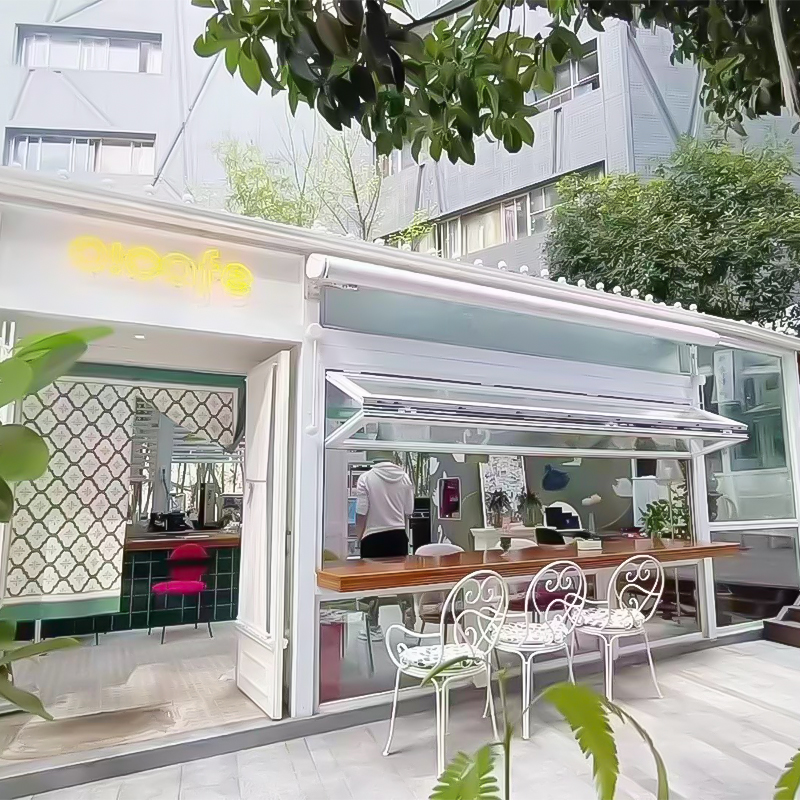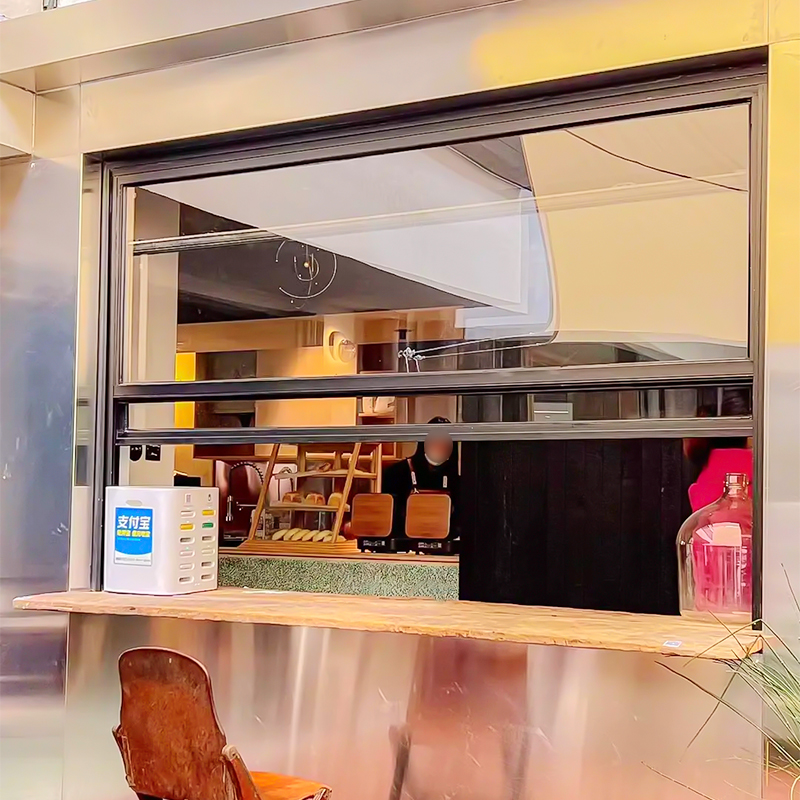How is the wind pressure resistance of electric folding windows related to the window structure?
Release Time : 2025-09-18
The wind pressure resistance of electric folding windows is closely linked to their structure, encompassing multiple factors, including material strength, structural design, connection techniques, opening method, hardware system, glazing configuration, and installation quality. These factors collectively determine the structural stability and safety of the window under strong winds.
Material strength is the foundation of wind pressure resistance. The tensile strength and flexural modulus of the window frame's main profile directly influence its deformation resistance. For example, high-strength aluminum alloys (such as 6060-T66 titanium-magnesium-silicon alloy) offer significantly better wind pressure resistance than ordinary PVC plastics. Their higher tensile strength and superior toughness effectively resist bending or fracture caused by wind pressure. The material selection for window structures must balance strength and lightweight design to avoid excessive weight that increases structural loads.
Structural design is the core of wind pressure resistance. Multi-cavity structures use internal partitions to distribute wind pressure stress, enhancing overall rigidity. Strengthened center columns or crossbeams provide frame support and improve torsional resistance. For example, electric folding windows with a muntin structure offer superior wind pressure resistance compared to double-sash casement designs because the muntin effectively distributes wind pressure and reduces sash deformation. Furthermore, the window structure's geometric shape (such as a curved or zigzag shape) can reduce wind pressure impact by optimizing airflow paths.
The precision of the connection process directly impacts wind pressure resistance. Processes such as corner gluing and muntin connection gluing strengthen the bond between profiles and prevent structural loosening caused by gaps. For example, corner gluing fills gaps between profiles, improving the overall sealing and wind pressure resistance of the window frame, maintaining structural stability even in extreme weather conditions such as typhoons.
The compatibility of the opening method with the window structure influences wind pressure resistance. The sashes of electric folding windows are connected by hinges or sliding rails, forming a multi-layered structure when opened. However, gaps between the sashes can become points of wind pressure penetration. In contrast, the sashes of sliding windows are fully fixed to the track, providing greater structural stability. Therefore, electric folding windows need to optimize hinge layout, increase the number of locking points, or employ concealed sliding rails to reduce the gap between sashes and improve wind resistance.
The quality and layout of the hardware system are critical to wind resistance. A multi-locking point design disperses the impact of wind pressure on individual locking points. For example, electric folding windows with a five-locking point system experience only one-fifth the force of a single-locking point system, significantly reducing deformation. Furthermore, the hinge's load-bearing capacity and durability must be matched to the window size to prevent loosening or breakage due to long-term use.
Glass configuration indirectly affects the window's wind resistance. Larger glass increases the weight of the window, placing greater stress on the window frame. This requires thicker profiles or additional support structures to balance the load. For example, high-rise buildings using electric folding windows should utilize laminated or insulating glass, and optimize the glass pressure line design (such as a one-piece closed-cavity structure) to enhance the stability of the connection between the glass and the window frame and prevent glass from falling due to wind pressure.
Installation quality is the ultimate guarantee of wind resistance. Sealing between the window and the wall (such as using foam filling and waterproof adhesive sealing) prevents wind pressure from penetrating the gap and preventing structural sway caused by gaps. Furthermore, ensure that the window is level and vertical during installation to avoid tilting, which can lead to uneven localized loads and reduce wind resistance. Regular maintenance (such as checking hinge lubrication and locking point flexibility) can also extend the window's lifespan and maintain its wind resistance.








